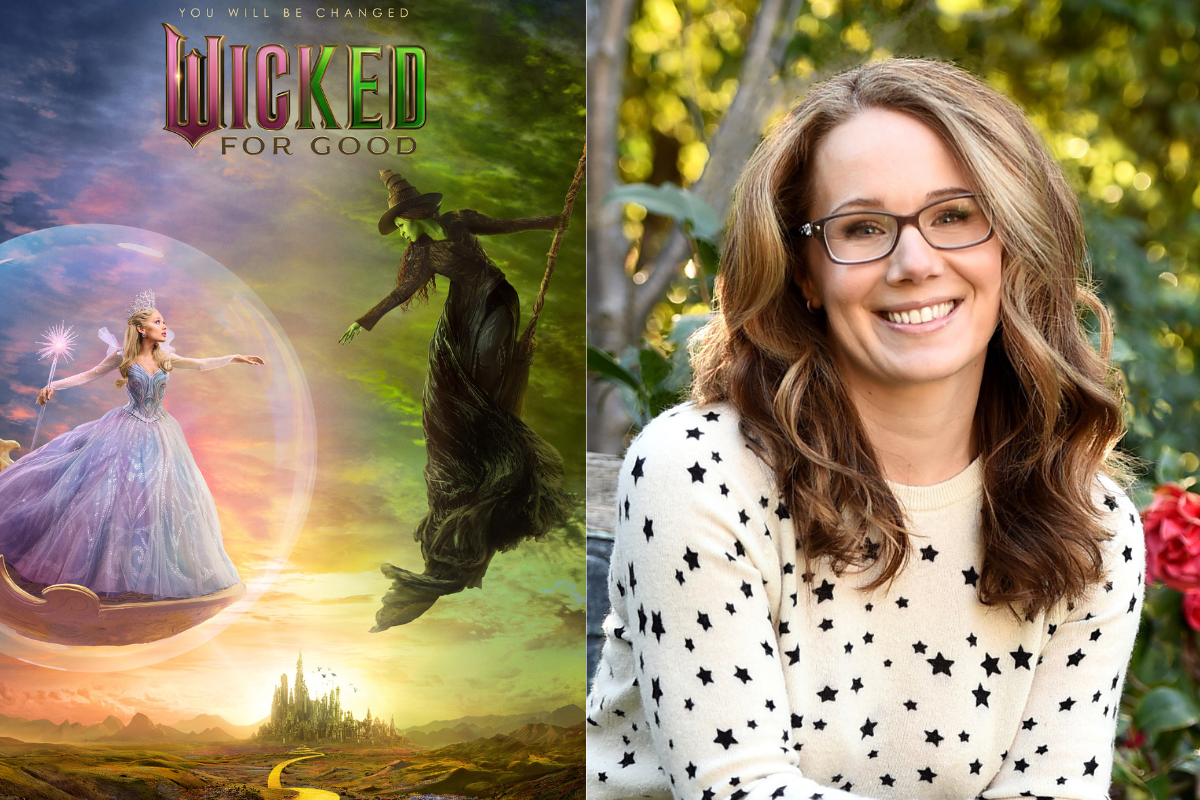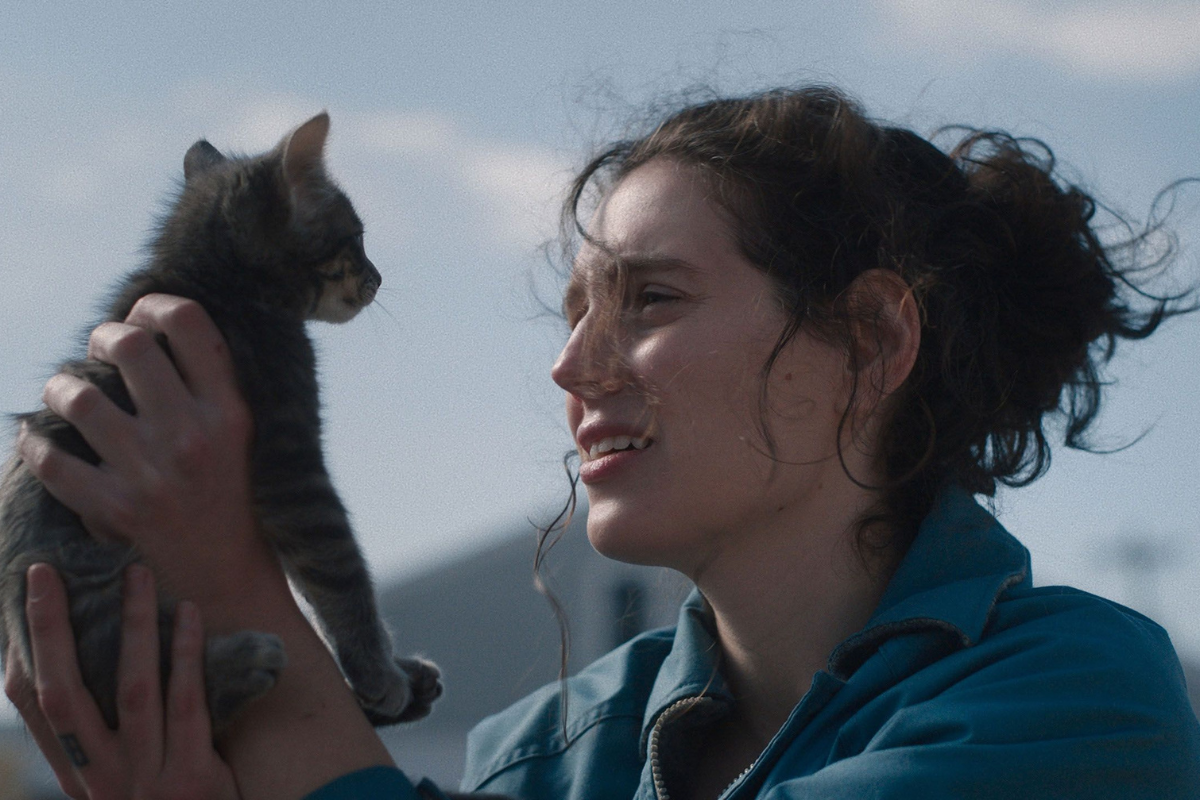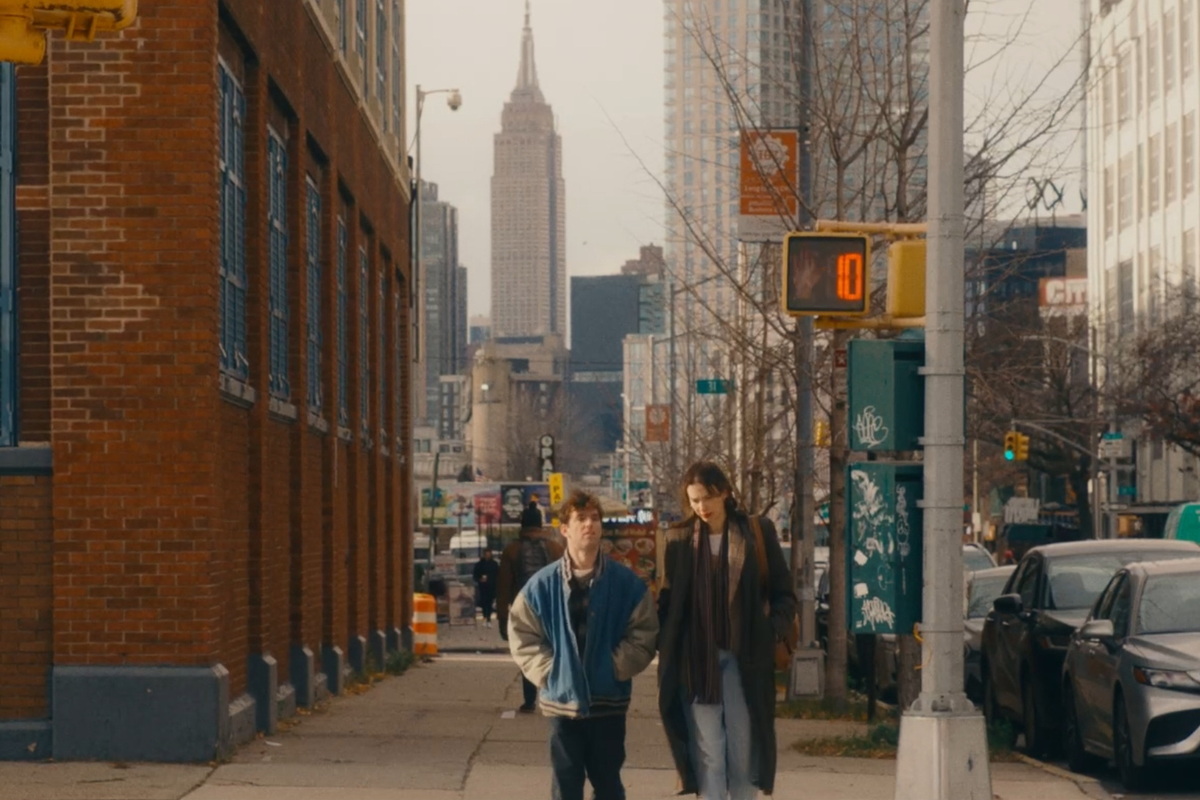Why ‘Arthur the King’ Is a Four Act Movie: A Conversation with Screenwriter Michael Brandt
‘Arthur the King’ screenwriter Michael Brandt shares what emotionally resonated for him to adapt this true story, discovering the thematic foundation, how his editing background influences his writing, and why this movie is a four-act structure.
Over the course of ten days and 435 miles, an unbreakable bond is forged between pro adventure racer Michael Light (Mark Wahlberg) and a scrappy street dog companion dubbed Arthur. Based on an incredible true story, ARTHUR THE KING follows Light, desperate for one last chance to win, as he convinces a sponsor to back him and a team of athletes (Simu Liu, Nathalie Emmanuel, and Ali Suliman) for the Adventure Racing World Championship in the Dominican Republic. As the team is pushed to their outer limits of endurance in the race, Arthur redefines what victory, loyalty and friendship truly mean.
How do you dramatize a true story about a man, a race, and a dog? And how do you tap into the emotional core of the story – when and if you’re aware of the outcome? It’s a tricky balance, but in this feel-good, emotional rollercoaster film - it finds its way.
Arthur the King screenwriter Michael Brandt recently spoke with Script about what emotionally resonated for him to adapt this true story, and discusses the process of selecting specific events, discovering the thematic foundation, how his editing background influences his writing, and he talks about why this movie is a four-act structure.
This interview has been edited for content and clarity.
Sadie Dean: How did you initially get attached to this project?
Michael Brandt: Tucker Tooley who's the producer who I've known forever, it was right on the heels of me leaving the Chicago shows, and he said, ‘I have this book. I don't know if it's for you…it's an adventure racing story. ESPN did a thing on it. And there was a dog in the middle of it.' And so, I said, ‘Oh, let me take a look.’ And I watched ESPN, they have an SC Featured, it’s like 10 or 12 minutes long on ESPN, where they actually have the GoPro footage and moments from the real race because everything was recorded. And so, you actually see the moment in there where Mikael [Lindnord] gives Arthur the meatballs - they had cameras in all the corners. And they did an incredibly well-produced 10-minute video on Mikael and Arthur.
And I came away from that, with a very strong opinion that this should be a sports movie with a dog. And I'm the person to write that. I'm not the person to write the - which there easily could be the internal monologue of the dog or the talking dog version or the animated dog version - but I thought if everybody's cool with this, I'd like to do a sports movie with a dog that's got a real dog, and real mud, and real blood and blisters and pain. And let's make a dog part of a real sports journey.
I went to New York, because Mikael was in Sweden, and we both flew to New York and met there with our wives and had dinner. And we just completely hit it off. And him being such a sportsman I didn't think it was a stretch that he would like that way of going about it. But we completely hit it off. And by the time that dinner was over, I was in and wanted to write the movie. So that was kind of how it all germinated.
Sadie: How do you select which milestones to highlight or use as plot points for conflict or character motivation? Because I can only imagine there are hundreds of things that happened to Mikael and his team during that race.
Michael: Yeah, that's the hardest thing about, I think, this job is when you're doing a true story, figuring out what to filter. Because I ended up fictionalizing the team members, but for a long time, there was the thought of, let's include those three other people as they were because they had their own stories. And I talked to a couple of them. You're starting there - this is the actual story. These are the events of the story. How does this make a movie? And everybody's got an anecdote or a thought. Even the producers from ESPN.
And so it's a good problem to have because you have a lot of stuff, but ultimately...I have to understand my job is to write a movie and not dramatize what all these people think was relevant or interesting. And figure out what that journey is, and really kind of boil it down into what's important for those 90 or 100 minutes.
Sadie: Was there a thematic anchor for you when writing this?
Michael: In Mikael's book, he talks a lot about his father. And he talks about the success and the pressure; the success of his father, being in the military, things his father had accomplished. And that Mikael, as a younger boy, wanted to follow on that same path. And I had a father who was starting quarterback on a number one team in the country in college, and he was drafted in baseball to play professional baseball - he was a superstar athlete. And so, I related with that kind of internal pressure - nobody else needs to put that pressure on you. Nobody has to tell you, ‘You should be more like him,’ or ‘You should be as successful as your father or your parents.’ But we just do it to ourselves. And it's something I did to myself. And I could tell Mikael did. You can tell by reading his book what was driving him.
There were early versions of the screenplay that had Mikael failing at hockey and had him doing some of the things in the book that he failed at before he found adventure racing. But then ultimately, again, because of the economy that you need to write a movie, we kind of brought it all into that one scene in the board room. And that one speech he has, which I think Mark [Wahlberg] does a great job with, about the things he failed at.
And that little anecdote - there's a long-distance runner named Dean Karnazes - I remember reading his book years ago, and he came home from his 40th birthday party fat and drunk. And it was two in the morning, feeling really sorry for himself. And he just started running in his dress shoes and pants and shirt. And his feet were bloody, and it's a lot of what is in that speech. And I just thought, ‘OK, I can kind of boil all of Mikael's childhood down to his own version of that story. I get cut from the baseball team, and I just start running. And then I do it again the next day.’
And I think that's the thematic idea - running itself as a theme. But when you're just running toward something, but you're not sure what it is, is also the theme. That's this thing of a kid who never could figure out his place in the world. And now, by the time he's doing this 19 years later, he hasn't really reached the pinnacle, he hasn't found that mountaintop that he's been running for. So, I think when I kind of gelled all of these ideas together in that one speech, that to me was, OK, we can always go back to that whenever there's a crossroads in terms of the story or the characters.
Sadie: And then you throw in the dog, and that heightens the story – the dog chooses him.
Michael: Yeah, it's just a guy who doesn't know his purpose. And not that the dog was his purpose, but the dog helped him find his purpose. And I think that that's important, too, that all of the things in his life that feel unsettled, in the first part of the movie are settled by the end of the movie.
Sadie: How did you go about finding those emotional touchstone points from the dog’s point of view and following their emotional journey – without obviously, having a talking dog?
Michael: Well, obviously, because it's a movie, it makes it a little easier because you just find the action that helps define that. And sometimes we too easily fall back on dialogue and people talking about what they feel, and what they're thinking versus just doing it. So, in some ways, there's an economy to just finding that little emotional action moment, a physical moment with the dog that defines that or highlights it.
The first draft of the script, I will admit did not have any Arthur in it until the meatball scene. It all sounded great in theory. And we all agreed let's tell that version of the story. But when everybody read the first draft, we weren't meeting the dog until 30 minutes into the movie. And there is a certain element of, it's not the commercial element so much it's just the satisfaction element of, ‘I came here to see a movie about a guy and a dog. And I'd like to see what the dog is going through first.’ Because, in reality, Mikael didn't know what Arthur went through, he just saw the results of what Arthur had gone through. So, we did have to kind of come up with that on our own.
We knew based on stories that we've been told about the way dogs are treated in Ecuador, which is where the actual race took place, that people treated dogs very badly. And so that was just something that needed to be in the movie and I think we needed to see a version of it. And also see the results of it. And because I think Arthur having gone through what he's gone through by the time he and Mikael meet, it's not dissimilar to what Mikael has gone through.
Now, Mikael hasn't gone through abuse in the sense of somebody has been injuring him, but he has gone through a lifetime of not really understanding where his place was in the world. And Arthur is certainly smart, but he's lonely. And he doesn't fit in with the rest. And that was another idea that when you realize these are kind of two sides of the same coin, Mikael and Arthur, that was again, an easy thing to lean into whenever we needed to.
Sadie: Yeah, and it works is. Earlier in your career, you started out as an editor. How much of that background has influenced how you tackle what's on the page?
Michael: I think editing was the best film school I could have gone to. When I first started graduate school, my professor ended up becoming my mentor and said, ‘What do you want to do?’ And I said, ‘I want to be a writer and director.’ And his response was, 'Well, then you need to learn how to be an editor.' And at the time, I was like, well, that sounds kind of right. But in the end, that was the best advice I ever got. Because when I moved to Los Angeles, within a year, I was working for Robert Rodriguez. And then I was working for Quentin Tarantino in the post-production parts of their worlds.
I moved back to Austin for a little while and basically worked out of Robert's house for a year on the movie, The Faculty. And that's when Derek [Haas] and I were writing our first script. And I remember, still, one of my favorite comments I ever got about a script was when that first script went out, the guy...one of his comments was, 'I started reading it standing at my kitchen counter and I finished it, and I realized I was still standing there.' And I took that as well, 'That's a good compliment.' But I also took it as there's again, an economy in the writing, that you're gonna find in the editing room eventually anyway, you just have to.
So, I like to write in a way that gets in and out of things quickly. I like to write pages that have a lot of whitespace, that people turn the pages pretty quickly on, because I think that the imagination can fill in all the blanks that the filmmaker is going to fill in - eventually, anyway. Robert Rodriguez is an amazing filmmaker. But when you sit and watch him cut his own movies, you realize that's where his true talent lies, is knowing when to get in and get out of a scene, get out of a shot, to create atmosphere, create tension, create emotion, through those shots. And so, I don't do it consciously, but I know that editing was an important part of just my style of writing.
Sadie: Any advice for adapting a book into a screenplay?
Michael: I've done quite a few of them. The first thing you have to do is put the source material away. And it's hard. And you go back to it when you're stuck. Or you go back to it when you need something. The copy of Arthur, the book that I have, my thing is I just read it. And I have a pen next to me, I just put a line next to anything that seems like it might go in the movie, not trying to edit that at all. And then maybe I'll pull that book out six months later, and say, ‘Oh, yeah, I have a mark next to this thing, why did I do that?’
For me, it was important to make the movie and let the real story be the real story. And let those things intersect in the most interesting places I can find. For instance, in this story, the challenge was it's really a four-act story. Because you have all the setup, you have the race, you have the end of the race, and then you have the race to save Arthur. So, I'm still not sure if I figured it out, but I know it's in theaters [laughs] so I hope people enjoy this four-act movie that they're about to watch. If anybody has an idea how to get into three acts, I'd love to hear it.
Sadie: But it works. Because as an audience member, I wanted to see the next journey for Mikael getting Arthur home – I didn’t want it to end.
Michael: And there's a lot of conversation because they don't win the race and they don't win the race because of Arthur. When you have 100 pages, where does the end of that race come? They're not going to win. You've been talking about it for the first 75 or 80 pages up to that because now there's a new thing in front of them. And that's where I had to really lean into Mikael's story, because that's really what happened and just lay that out. And let the audience feel it - how they're going to feel. And so that was the biggest challenge in this is how do you handle the last 30 or 40 minutes of the movie?
Arthur the King releases in Theaters on March 15, 2024.
STEAMBOAT WILLIE: Using Famous Characters to Break-In!
Join Jon James Miller, award-winning screenwriter, novelist, and professional story editor, to learn the tools necessary to take advantage of brands and characters everyone knows and loves to shine a limelight on their own original work.
Sadie Dean is the Editor of Script Magazine and writes the screenwriting column, Take Two, for Writer’s Digest print magazine. She is also the co-host of the Reckless Creatives podcast. Sadie is a writer and filmmaker based in Los Angeles, and received her Master of Fine Arts in Screenwriting from The American Film Institute. She has been serving the screenwriting community for nearly a decade by providing resources, contests, consulting, events, and education for writers across the globe. Sadie is an accomplished writer herself, in which she has been optioned, written on spec, and has had her work produced. Additionally, she was a 2nd rounder in the Sundance Screenwriting Lab and has been nominated for The Humanitas Prize for a TV spec with her writing partner. Sadie has also served as a Script Supervisor on projects for WB, TBS and AwesomenessTV, as well as many independent productions. She has also produced music videos, short films and a feature documentary. Sadie is also a proud member of Women in Film.
Follow Sadie and her musings on Twitter @SadieKDean







